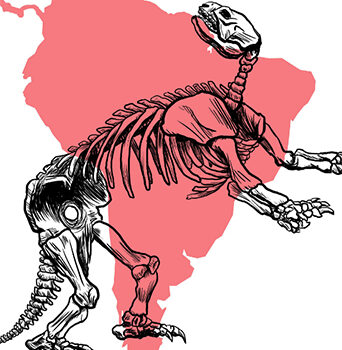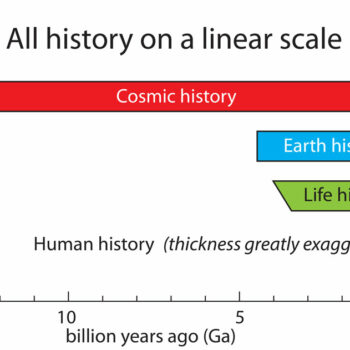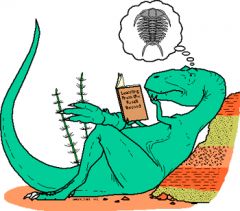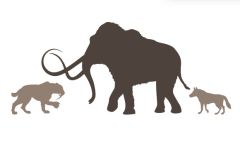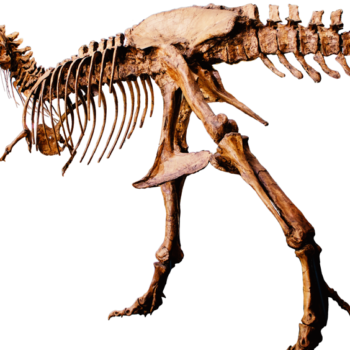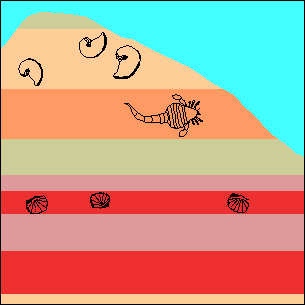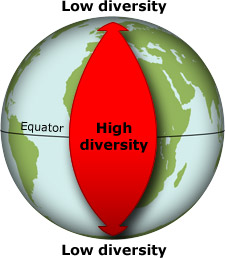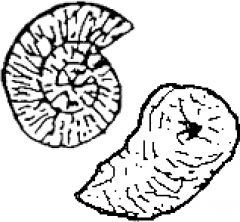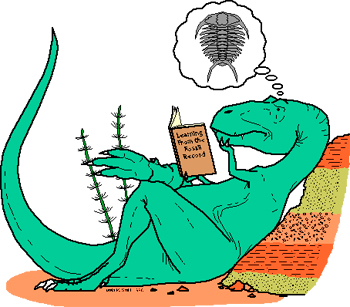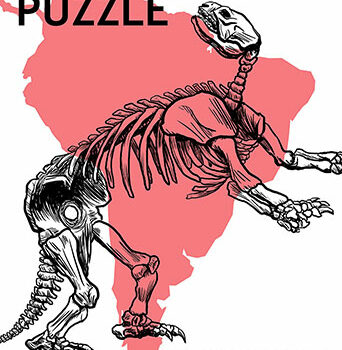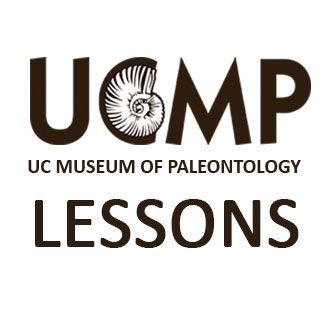Search by:
Found 17 resources:
Un rompecabezas Pleistoceno: Extinctión en América del Sur
Grade Level(s):
- 6-8
- 9-12
Source:
- UC Museum of Paleontology
Resource type:
- Comic
Time: 20 minutes
Overview
En este comic podrás seguir la investigación que hicieron María y Miguel para resolver un misterio paleontológico. Hace más de 11000 años, más del 80% de las especies de grandes animales de Sudamérica se extinguieron. ¿Por qué pasó? (Disponible en inglés, español y portugués.)
ChronoZoom
Grade Level(s):
- 13-16
Source:
- The ChronoZoom Team
Resource type:
- Infographic
Time: 1-6 hours
Overview
"Big History" is the currently active effort to bring together in a unified way all of the information about the past, both humanistic and scientific. One of the problems for anyone teaching Earth history or Big History is how to help students (or anyone) to comprehend the time scales. This series of graphic panels helps address this challenge by presenting Big History in a sequence of time scales.
Stories from the Fossil Record
Grade Level(s):
- 6-8
- 9-12
Source:
- UC Museum of Paleontology
Resource type:
- Online activity or lab
Time: One to two class periods
Overview
This web-based module provides students with a basic understanding of how fossils can be used to interpret the past.
Stickleback Evolution Virtual Lab
Grade Level(s):
- 9-12
- 13-16
Source:
- Howard Hughes Medical Institute
Resource type:
- Online activity or lab
Time: 3 hours
Overview
This virtual lab teaches skills of data collection and analysis to study evolutionary processes using stickleback fish and fossil specimens.
Sequencing Time
Grade Level(s):
- 6-8
Source:
- UC Museum of Paleontology
Time: 40-50 minutes
Overview
Students assign relative and numerical times to events in their lives to understand how scientists developed the Geologic Time Scale.
Radiations and extinctions: Biodiversity through the ages
Grade Level(s):
- 13-16
Source:
- Zimmer, Carl
Resource type:
- Article
Time: 1.5 hours
Overview
This excerpted chapter from Carl Zimmer's book, The Tangled Bank, describes the evolutionary processes responsible for large scale patterns in the diversity of life through time. Reprinted with the permission of Roberts and Company Publishers, Inc.
This resource is available from the National Center for Science Education.
McKittrick Fossil Find Classroom Activity
Grade Level(s):
- 3-5
- 6-8
- 9-12
Source:
- UC Museum of Paleontology
Resource type:
- Classroom activity
Time: 50 minutes
Overview
In this lesson, students play the roles of paleontologists on a dig. They “unearth” a few fossils at a time and attempt to reconstruct the animal the fossils represent.
Mass extinction
Grade Level(s):
- 9-12
- 13-16
Source:
- UC Museum of Paleontology
Resource type:
- Tutorial
Time: 30 minutes
Overview
Usually, extinction operates at a fairly constant rate, culling some species while speciation generates new ones. However, at a few points in life's history the humdrum of regular extinction has been interrupted by mass extinctions. Learn more about these biodiversity crises.
How Much is a Billion
Grade Level(s):
- 3-5
- 6-8
Source:
- Monk, Anne
Resource type:
- Classroom activity
Time: Variable
Overview
In this activity, students get a sense of how big a billion really is, which is necessary in order to understand deep time.
Understanding Geologic Time
Grade Level(s):
- 3-5
- 6-8
- 9-12
Source:
- UC Museum of Paleontology
Resource type:
- Online activity or lab
Time: One class period.
Overview
A web-based module in which students gain a basic understanding of geologic time, the evidence for events in Earth's history, relative and absolute dating techniques, and the significance of the Geologic Time Scale.
Visualizing life on Earth: Data interpretation in evolution
Grade Level(s):
- 9-12
- 13-16
Source:
- UC Museum of Paleontology
Resource type:
- Online activity or lab
Time: 2 hours
Overview
This web-based module leads students through an exploration of the patterns in the diversity of life across planet Earth. Students are scaffolded as they practice data interpretation and scientific reasoning skills.
Discovering mass extinctions in the fossil record
Grade Level(s):
- 13-16
Source:
- UC Museum of Paleontology
Resource type:
- Online activity or lab
Time: 2 hours
Overview
This activity (suitable for distance learning) is designed to introduce students to the nature and process of science through the discovery of mass extinctions in the fossil record. Students will explore the fossil record of brachiopods and bivalves using the Paleobiological Database, identify patterns in their data, and generate and evaluate hypotheses. They will also document this process using the Understanding Science flowchart. Clicking the link above will download the Word file for this lesson.
Determining Age of Rocks and Fossils
Grade Level(s):
- 9-12
- 13-16
Source:
- McKinney, Frank
Resource type:
- Lab activity
Time: One to two class periods
Overview
In this series of lessons students learn the basic principles used to determine the age of rocks and fossils by using half-life in radioactive decay and stratigraphy.
Who’s on First? Relative Dating
Grade Level(s):
- 6-8
Source:
Resource type:
- Classroom activity
Time: 30 minutes
Overview
Students sequence familiar items and then do a similar sequencing activity using fossil pictures to learn how paleontologists use fossils to give relative dates to rock strata.
What Came First?
Grade Level(s):
- 6-8
Source:
- UC Museum of Paleontology
Resource type:
- Classroom activity
Time: 60 minutes
Overview
Students sequence actual events in the history of life on Earth and place them on a large timeline.
A Pleistocene Puzzle: Extinction in South America
Grade Level(s):
- 6-8
- 9-12
Source:
- UC Museum of Paleontology
Resource type:
- Comic
Time: 20 minutes
Overview
In this comic, you'll follow the investigation of scientists Maria and Miguel as they solve a paleontological mystery. About 11,000 years ago, more than 80% of the large animal species in South America went extinct. Why did it happen? (Available in English and Spanish)
A Long Time
Grade Level(s):
- K-2
Source:
- Janulaw, Sharon
Resource type:
- Classroom activity
Time: 20 minutes
Overview
The teacher puts up a timeline that shows students' age relative to geologic time.
You will be directed to an external page on the UC Museum of Paleontology website.

